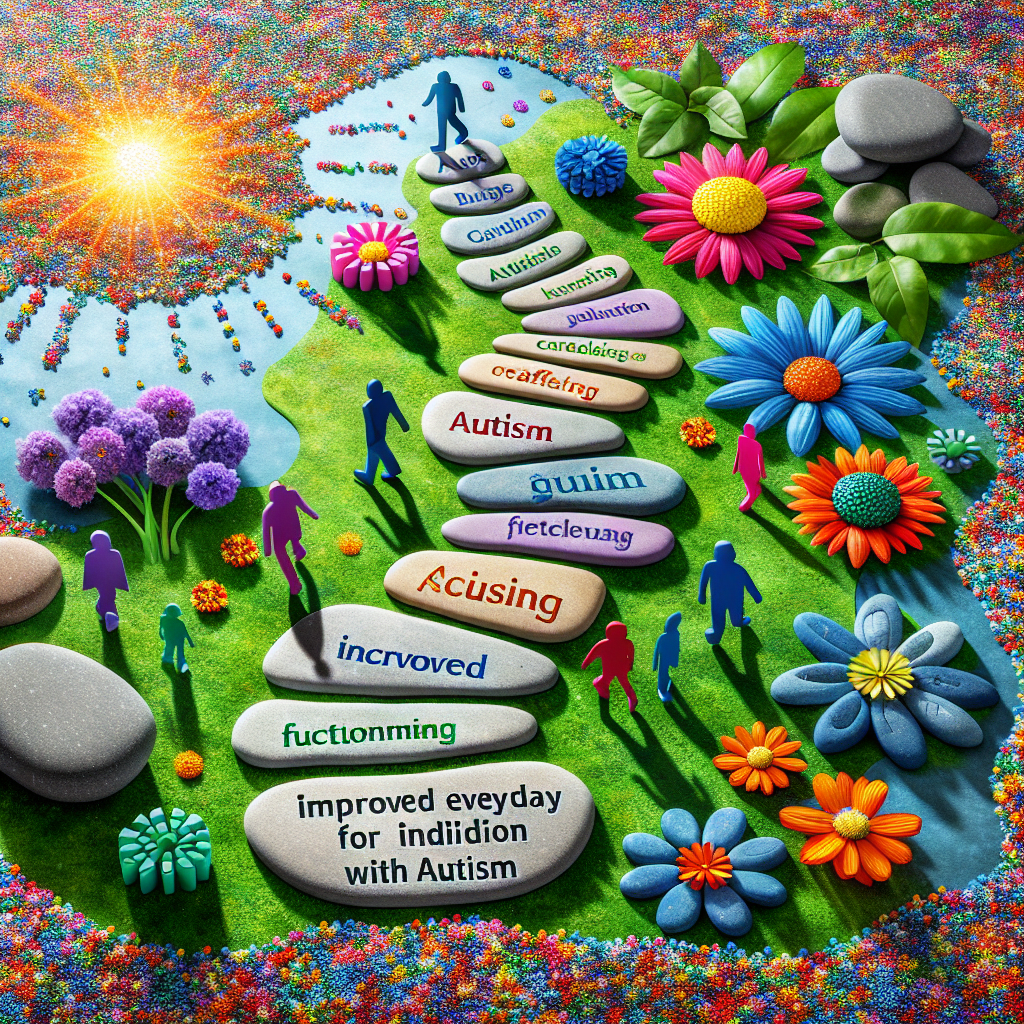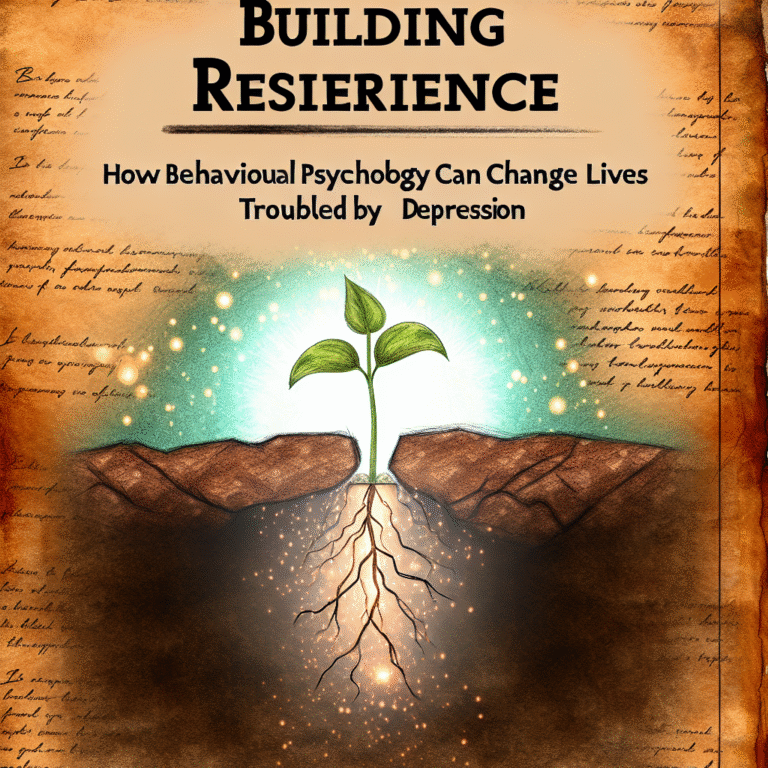
Behavioral Interventions: A Proven Pathway to Improved Everyday Functioning for Individuals with Autism
Introduction
Imagine navigating a bustling world filled with social expectations, sensory overload, and constant demands for communication. For many individuals with autism, this scenario is a daily struggle. Yet, within this challenge lies a beacon of hope: Behavioral Interventions: A Pathway to Improved Everyday Functioning for Individuals with Autism. These interventions do not merely function as educational tools; instead, they empower individuals to thrive, cultivate independence, and forge meaningful connections in their lives.
As we delve into this crucial topic, we will explore how behavioral interventions can transform lives, supported by compelling case studies and practical insights. This article aims to be your ultimate guide through the landscape of behavioral interventions, illuminating its profound benefits in enhancing everyday functioning for individuals with autism.
Understanding Behavioral Interventions
What Are Behavioral Interventions?
Behavioral interventions are structured methods based on principles of behaviorism that aim to promote desired behaviors while reducing undesirable ones. These strategies often focus on teaching new skills, enhancing communication, and managing challenging behaviors. There are various approaches, including Applied Behavior Analysis (ABA), Social Skills Training, and Cognitive Behavioral Therapy (CBT).
Why Are They Important?
The significance of Behavioral Interventions: A Pathway to Improved Everyday Functioning for Individuals with Autism cannot be overstated. They provide individuals with the tools to better engage with their environment. Through these interventions, individuals can learn to navigate social cues, improve communication skills, and manage their environment effectively.
The Science Behind Behavioral Interventions
The effectiveness of behavioral interventions is supported by robust research findings. A plethora of studies have shown that early and consistent intervention can lead to significant improvements in social skills, communication abilities, and adaptive behavior.
| Intervention Type | Common Techniques | Potential Outcomes |
|---|---|---|
| ABA | Discreet Trial Training, Reinforcement | Improved academic skills, social interaction |
| Social Skills Training | Role-playing, Peer modeling | Enhanced peer relationships, social understanding |
| CBT | Cognitive restructuring, Exposure therapy | Reduced anxiety, better coping mechanisms |
Implementing Behavioral Interventions
Creating a Supportive Environment
A critical first step in implementing Behavioral Interventions: A Pathway to Improved Everyday Functioning for Individuals with Autism is establishing a supportive environment. This involves creating spaces where individuals feel safe and motivated to learn.
- Structure: Establish regular routines and predictable schedules to reduce anxiety.
- Visual Supports: Utilize tools like charts, pictures, and written schedules to aid comprehension.
- Positive Reinforcement: Reward positive behaviors to encourage their repetition.
Tailored Approach: Case Study
To illustrate this, consider the case of Jacob, a 9-year-old boy diagnosed with autism. After observing his struggles with communication, his parents engaged a behavior analyst. By implementing ABA principles, they established a structured routine for daily activities.
Jacob’s Achievements:
- Communication: Jacob began using a picture exchange communication system (PECS), leading to improved expressive language skills.
- Social skills: Engaging in structured play sessions with peers resulted in Jacob initiating social interactions for the first time.
Jacob’s journey underscores how tailored approaches can nurture growth, making Behavioral Interventions: A Pathway to Improved Everyday Functioning for Individuals with Autism a tangible reality.
Core Techniques in Behavioral Interventions
Discrete Trial Training (DTT)
DTT is a fundamental method used in ABA that breaks down learning into small, manageable steps. With clear instructions, immediate feedback, and reinforcement, DTT enhances skill acquisition.
Social Skills Training (SST)
SST focuses on developing interpersonal skills through direct teaching and practice of social rules and cues. Role-playing scenarios, improvisation, and peer interaction facilitate practical learning experiences.
Cognitive Behavioral Therapy (CBT)
CBT helps individuals identify their thoughts and behaviors, enabling them to cope with anxiety and understand social norms. This method promotes not only behavioral change but also emotional health.
Case Study: Sofia’s Success with CBT
Sofia, at 14 years old, exhibited significant anxiety in social situations. Her therapy involved CBT techniques tailored for adolescents with autism. Through scenario-based practices and cognitive restructuring, her performance in social contexts dramatically improved.
Sofia’s Milestones:
- Participation: Increased attendance at social gatherings and school events.
- Confidence: Demonstrated enhanced self-advocacy and self-esteem.
Sofia’s story exemplifies how Behavioral Interventions: A Pathway to Improved Everyday Functioning for Individuals with Autism can lead to profound transformation.
Challenges and Solutions
Identifying Obstacles
While behavioral interventions have proven efficacious, their implementation poses various challenges. These may include:
- Resistance to Change: Some individuals may resist new routines or strategies.
- Generalization of Skills: Skills learned in one environment may not always transfer to another.
Strategies to Overcome Challenges
- Gradual Introductions: Introduce changes step-by-step to reduce overwhelm.
- Naturalistic Approaches: Use real-life scenarios for practice to enhance generalization.
Case Study: Overcoming Barriers
Engineers’ own Simon faced challenges with generalization. Initially in therapy, he learned social skills in a controlled setting. However, when presented in real-life situations, he struggled.
Solutions Applied:
- Peer Interventions: Simon was paired with a peer mentor who guided him through social settings.
- Community Integration Activities: Participating in community events fostered real-world practice.
Through persistence and innovative strategies, Simon could leverage Behavioral Interventions: A Pathway to Improved Everyday Functioning for Individuals with Autism, significantly enhancing his social interactions.
Evaluating Effectiveness
Tracking Progress
Evaluating the effectiveness of behavioral interventions is crucial. Regular assessments help identify areas of improvement and allow for adaptations in strategy.
Tools for Evaluation
- Behavioral Assessments: Standardized scales can help gauge progress quantitatively.
- Anecdotal Records: Keeping detailed records of individual experiences creates a qualitative narrative of growth.
Case Study: Analyzing Progress with Mia
Mia’s parents tracked her progress through weekly evaluations that monitored her social engagements and behavioral responses.
Breakthroughs Noted:
- Increased Interactions: The number of initiated conversations with peers significantly rose over time.
- Behavior Changes: Notable reduction in anxiety-related behaviors during public events.
Mia’s development reinforces how continuous evaluation can fine-tune Behavioral Interventions: A Pathway to Improved Everyday Functioning for Individuals with Autism, ensuring success.
Conclusion
In summation, Behavioral Interventions: A Pathway to Improved Everyday Functioning for Individuals with Autism is more than a phrase; it embodies a hopeful journey towards empowerment, independence, and acceptance. As evidenced by diverse case studies, tailored behavioral strategies can lead to remarkable advancements in daily life and overall well-being.
Encouragingly, the journey doesn’t end here. Families, educators, and healthcare providers must continue to advocate for behavioral interventions that resonate with individual needs. The stories shared in this article highlight not only challenges faced but also triumphs achieved, reinforcing that success, no matter how small, is attainable.
Key Takeaway
Each small victory holds the potential for broader change. For every individual on the autism spectrum, the implementation of supportive behavioral interventions is not just a strategy; it’s a transformative tool that opens doors to brighter futures.
FAQs
1. What are the most common types of behavioral interventions for autism?
The most common types include Applied Behavior Analysis (ABA), Social Skills Training (SST), and Cognitive Behavioral Therapy (CBT).
2. How long does it take for behavioral interventions to show results?
Results can vary considerably depending on the individual, the nature of their challenges, and the consistency of the intervention, but improvements can frequently be seen within a few months to a year.
3. Can behavioral interventions be applied at home?
Absolutely! Parents can implement strategies learned in therapy at home to reinforce skills and behaviors.
4. Are behavioral interventions only for children with autism?
While many programs focus on children, behavioral interventions can be impactful for adolescents and adults as well, tailored to suit individual circumstances.
5. Where can I find resources for implementing behavioral interventions?
Numerous organizations, including Autism Speaks and local autism support groups, provide guidelines, training, and resources for families and practitioners seeking to implement behavioral interventions.
By embarking on this journey, you have taken a transformative step toward understanding how Behavioral Interventions: A Pathway to Improved Everyday Functioning for Individuals with Autism can truly empower lives. Let’s continue to share knowledge, support one another, and advocate for meaningful changes in the lives of individuals with autism.















